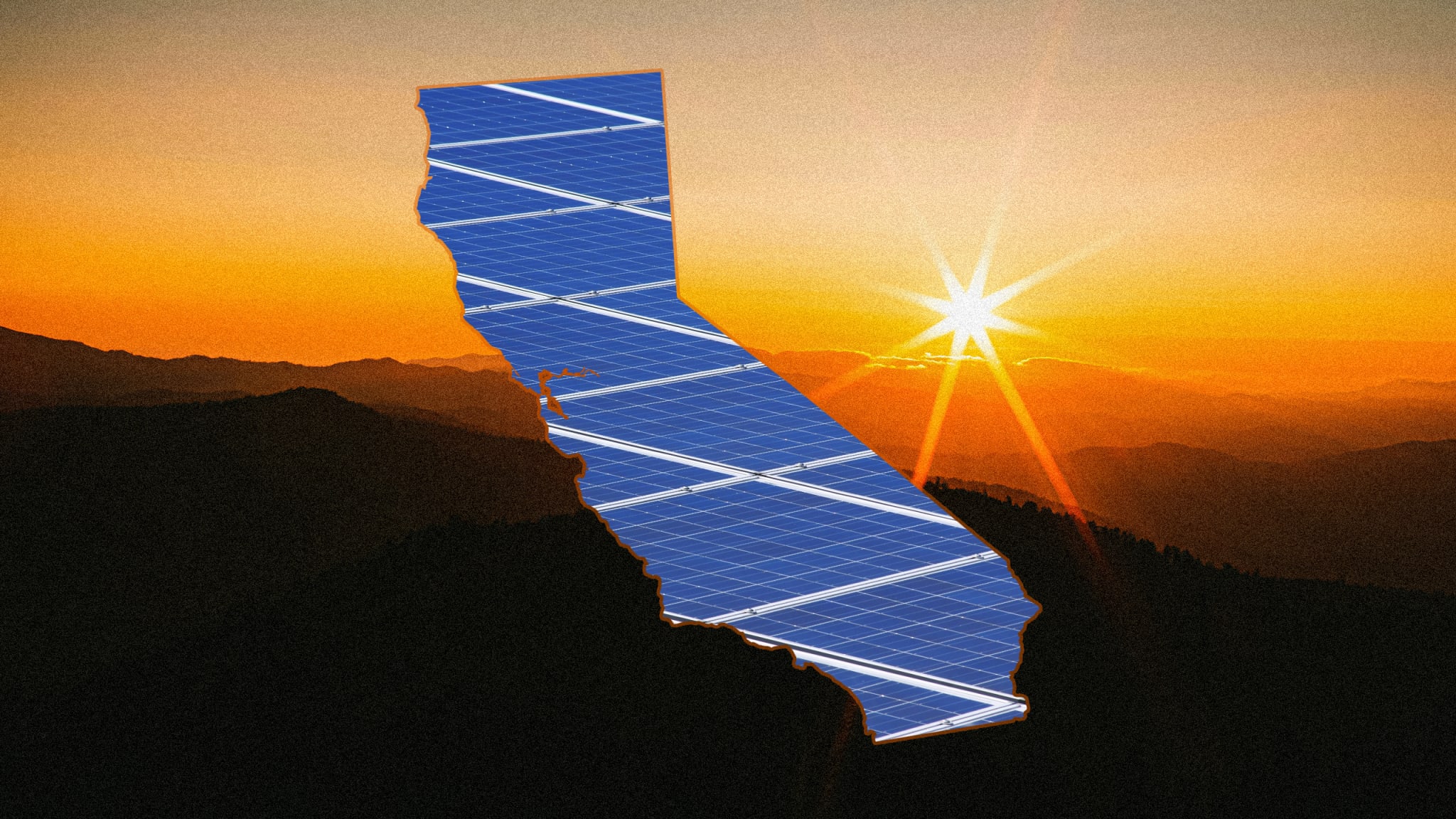Last Saturday, as 39 million Californians went about their daily lives—taking showers, doing laundry, or charging their electric cars—the whole state ran on 100% clean electricity for more than nine hours.
The same thing happened on Sunday, as the state was powered without fossil fuels for more than eight hours. It was the ninth straight day that solar, wind, hydropower, geothermal, and battery storage fully powered the electric grid for at least some portion of the time. Over the last six and a half weeks, that’s happened nearly every day. In some cases, it’s just for 15 minutes. But often it’s for hours at a time.
California first hit the milestone of running on 100% clean power in 2022, but it was only temporary. “In past years, it was only for one or two days, and not consecutively,” says Mark Jacobson, a Stanford professor who has been
posting updates about the state’s grid each day on X. “And all of a sudden we’re having now 37 of the last 45 days, and the last nine days straight.”
There’s a caveat: California also has natural gas plants that keep running at low levels in case backup power is needed. Even when the state is producing more than enough renewable energy to cover all of its needs, it’s still
exporting some gas power to other states. But it also exports solar power, helping make other grids cleaner. And it keeps getting closer to its overall goals for renewable energy. By 2030, the state plans to run on 60% renewable energy. It’s likely to hit that goal early. By 2045, the state plans to run on 100% zero-carbon energy, and Jacobson argues it’s technically possible to also accomplish that goal faster.
The state now has nearly 47 gigawatts of solar installed, both on rooftops and in sprawling, utility-scale solar farms. Rooftop solar helps reduce demand from the grid, since homeowners can use that power directly. And on sunny April days, when it usually isn’t hot enough to need air conditioning, renewables on the grid can produce more electricity than Californians need.
Too much solar power can be a problem. California often produces so much during the middle of the day that it can’t be used, so producers lose money and some of the potential environmental benefit is lost. “Some of it is absolutely being wasted,” says Paul Denham, senior research fellow at the National Renewable Energy Laboratory. But some of it can be sent to other regions, he says, and some of it can also be stored.
The state has added a significant amount of battery storage in the last few years. California is now home to the
world’s largest lithium-ion battery storage system for the grid, with more storage projects opening soon. Last Sunday, the state stored a
record amount of power.
Grid operators also want to add new transmission lines to make it easier to send more renewable energy to other states. Some companies are also beginning to use excess renewable energy for other purposes, like making green hydrogen or
heating up giant bricks that can be used to power factories. Utilities can also help by incentivizing customers to use power at different times. Right now, Jacobson says, PG&E, one of the state’s large utilities, charges more for power in the late afternoon, which doesn’t make sense—electricity should be cheapest when there’s the most solar power available.
The state might continue having streaks of 100% clean energy throughout the spring. But as the weather heats up and air conditioning spikes, renewables won’t yet be able to keep up with demand. Shifting to all clean energy all the time is a challenge, says Denham. “It’s pretty easy to do 80% or so—we don’t know the exact number because we haven’t gotten there yet,” he says. “But it just gets a lot more difficult to get to truly 100% every hour of the year.”
California is planning to build offshore wind power, which Jacobson says can help cover nighttime power demand. He also says that even more solar power and battery storage are needed. While Denham argues that some natural gas might still be needed to make sure that affordable power is available all the time,
geothermal energy may
eventually be able to help fill that gap.





